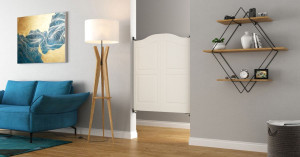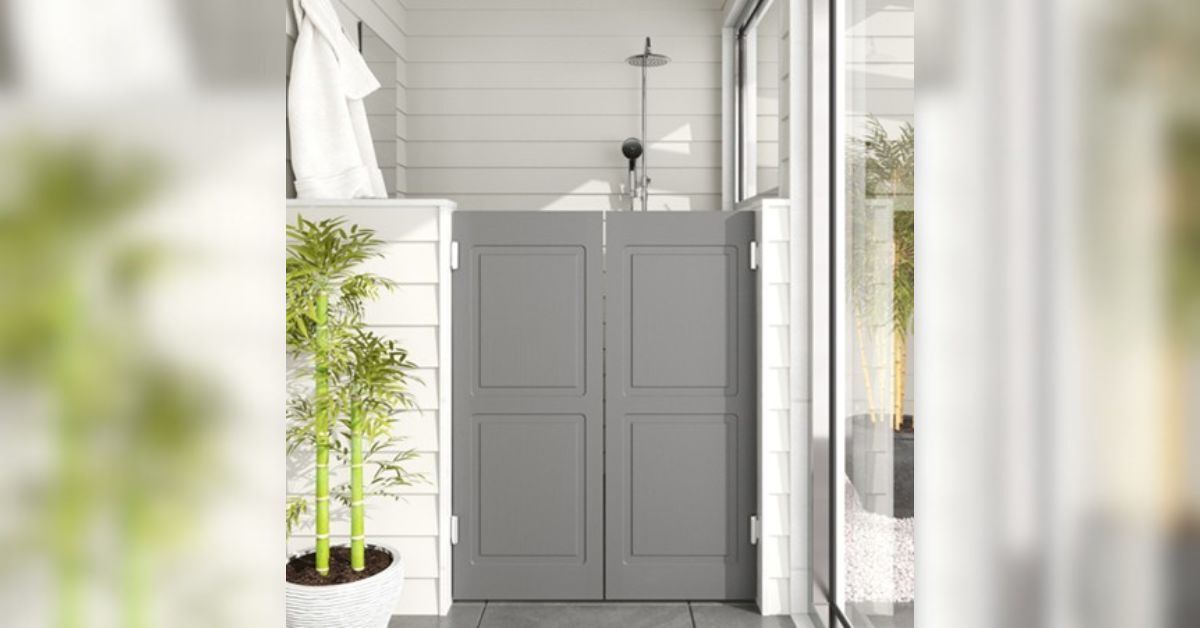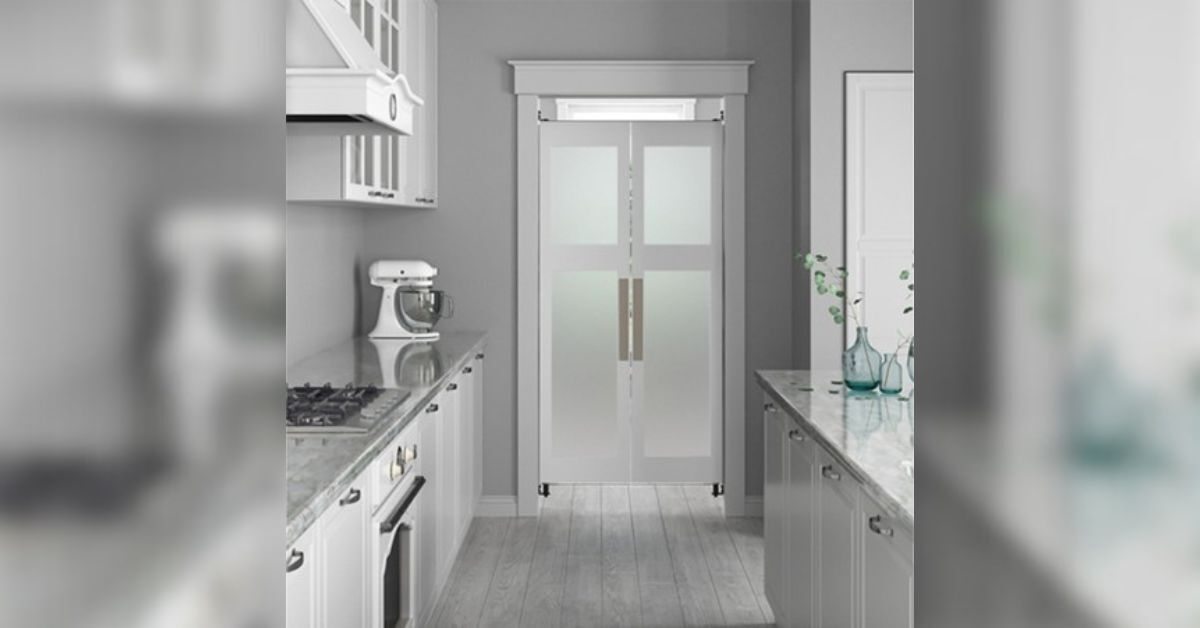
How Interior Designers Can Use Doors To Make a Statement
Doors are often an overlooked element in home design, yet they can transform a space completely. Their functionality is undeniable, but their aesthetic contribution is equally significant. Whether you’re designing a cozy apartment, a sprawling family home, or a chic commercial space, doors can offer more than just passage between rooms.
Key Takeaways:
- Doors can be intentional focal points; scale and placement (pivot, double, arched, hidden) shape circulation, frame views, and create memorable transitions.
- Material choice sets the mood: wood adds warmth and texture; glass brings light and visual connection (with frosted options for privacy); metal delivers a modern industrial edge; polymers/resins enable bold colors, patterns, and 3D textures.
- Color and finish are strategic tools: neutrals blend seamlessly, bold hues create accents, dual-tone faces bridge adjacent rooms, and hardware/frame details refine the overall effect.
This blog will focus on how interior designers can use doors to make a statement. It explores creative styles, positioning, and tips that designers can employ to highlight doors not as functional necessities but as bold design elements. Embark on this guide to discover how the simple addition or adjustment of a door can transform your next project.
The Role of Doors in Interior Design
Interior design is about understanding the balance between functionality and beauty. Doors serve as transitional elements in any structure, providing privacy and controlling the flow between spaces. However, they also present an opportunity to experiment with materials, colors, and textures that can add a new dimension to the overall design scheme of an interior.
For example, consider a bold, oversized pivot door that greets guests in the entryway of a home or office. Its size and structure exude grandeur. Also, the choice of material can give a preview of the space’s interior tone, be it wood for warmth, glass for transparency, or metal for modernity. Likewise, a swinging half door can offer both functionality and an open-air concept in kitchens or workspaces, blending accessibility with a touch of style.
Understanding how doors can merge form and function allows designers to view them not as fixed elements but as modifiable components that enhance the cohesiveness of a design.
Choosing the Right Door Style
Utilizing doors strategically involves being selective about their style. There are various designs to consider, ranging from traditional to contemporary, and each offers a distinct aesthetic and function.
For instance, sliding barn doors remain a popular choice for their charm, particularly in rustic or farmhouse-inspired spaces. They combine vintage vibes with space-saving practicality since they don’t require room to swing open.
Alternatively, French doors are a timeless style that enhances elegance and natural light. They act as a perfect divider for rooms that benefit from an open yet defined space. Their glass panes allow visibility while maintaining separation. Designers can utilize such pieces to seamlessly merge indoor and outdoor areas, providing continuity in design while enhancing natural light flow.
Another trendy option is the modern frameless glass door. Often used in corporate settings, these doors create an inviting, minimalist aesthetic that complements contemporary designs well. Adding matte or frosted finishes can enhance privacy without compromising the sleek appearance.
Keep in mind that style doesn’t end at the door itself. Customizing even the smallest details in the door’s design can create a major visual impact. For example, handles, hinges, and frame designs can amplify or contrast the surrounding decor.
Positioning as a Tool for Design
When interior designers use doors to make a statement, they must consider positioning. While the typical purpose of doors is to connect two areas, the placement itself can lead to innovative spatial effects.
A centrally positioned statement door in a long hallway, for example, can anchor an otherwise plain corridor into an artistic focal point. Similarly, double doors can emphasize grandeur when placed at major entrances, such as the transition into a dining area or master bedroom.
Designers can also explore unique configurations, such as dramatic arched doorways that evoke classical elegance or minimalist hidden doors seamlessly integrated into wall paneling. These subtle but impactful choices keep the design fresh and unexpected.
Even bi-fold or accordion-style doors reveal functional opportunities, such as effortlessly transitioning between indoor and outdoor spaces. They work beautifully in homes where the residents value openness and flexibility.
Material Matters
Doors are not just about their shape or usage; the material is equally influential. Designers can experiment with different materials to reflect texture, temperature, and visual depth.
Wood
Wood is a perennial favorite because of its warmth and natural aesthetic that complement nearly every interior theme. From rich walnut finishes that evoke luxury to reclaimed lumber that lends a rustic charm, wood is a versatile and timeless material.
Glass
Glass doors offer another layer of creative potential. Clear or frosted glass can integrate visibility and openness, making rooms feel more spacious without losing the boundary a door provides. For a bolder effect, choose colored or textured glass.
Metal
Metal doors, particularly those with industrial finishes, elevate modern interiors with a strikingly raw and bold element. Steel or aluminum doors are particularly effective in loft apartments or workplaces with minimalist designs.
Polymers
For ultra-modern designs, resin or acrylic doors open up innovative possibilities. These materials enable creative experimentation with embedded patterns, 3D textures, or layered colors that could result in a futuristic look.
Tying in Colors and Finishes
The color palette of a door should neither feel like an afterthought nor dominate the visual harmony of the space. Instead, it should fit seamlessly into the overall decor while enhancing the design’s character.
Staying Neutral
Neutral-toned doors create a subtle and sophisticated appearance, particularly when matched with walls or accents in the space. White or beige tones are enduringly popular for their classic appeal. For added interest, consider matte, matte-gloss combinations, or wood-stained finishes.
Going Bold
On the other hand, bold-colored doors can be vibrant focal points. Whether painted in a striking cobalt blue, deep mustard yellow, or classic black, they stand out in a neutral space or create contrast in a colorful one. Glossy finishes amplify these choices, giving the door a polished, attention-grabbing quality.
The Best of Both Worlds
Designers can also experiment with dual-tone designs, where the interior-facing and exterior-facing sides of the door have different hues. This allows the door to tie cohesively with two separate rooms that may have contrasting themes.
The Bigger Picture
When designing spaces, it’s easy to focus on furniture, lighting, or wall treatments as primary elements of aesthetic appeal—because they are. However, doors are an equally important feature.
From their design and position to material and color, they offer an avenue for innovation within design projects. More than just functional fixtures, they can be artistic expressions.
Before embarking on your next project, consider the many possibilities that doors hold. They might just be the design feature you’ve been overlooking.


